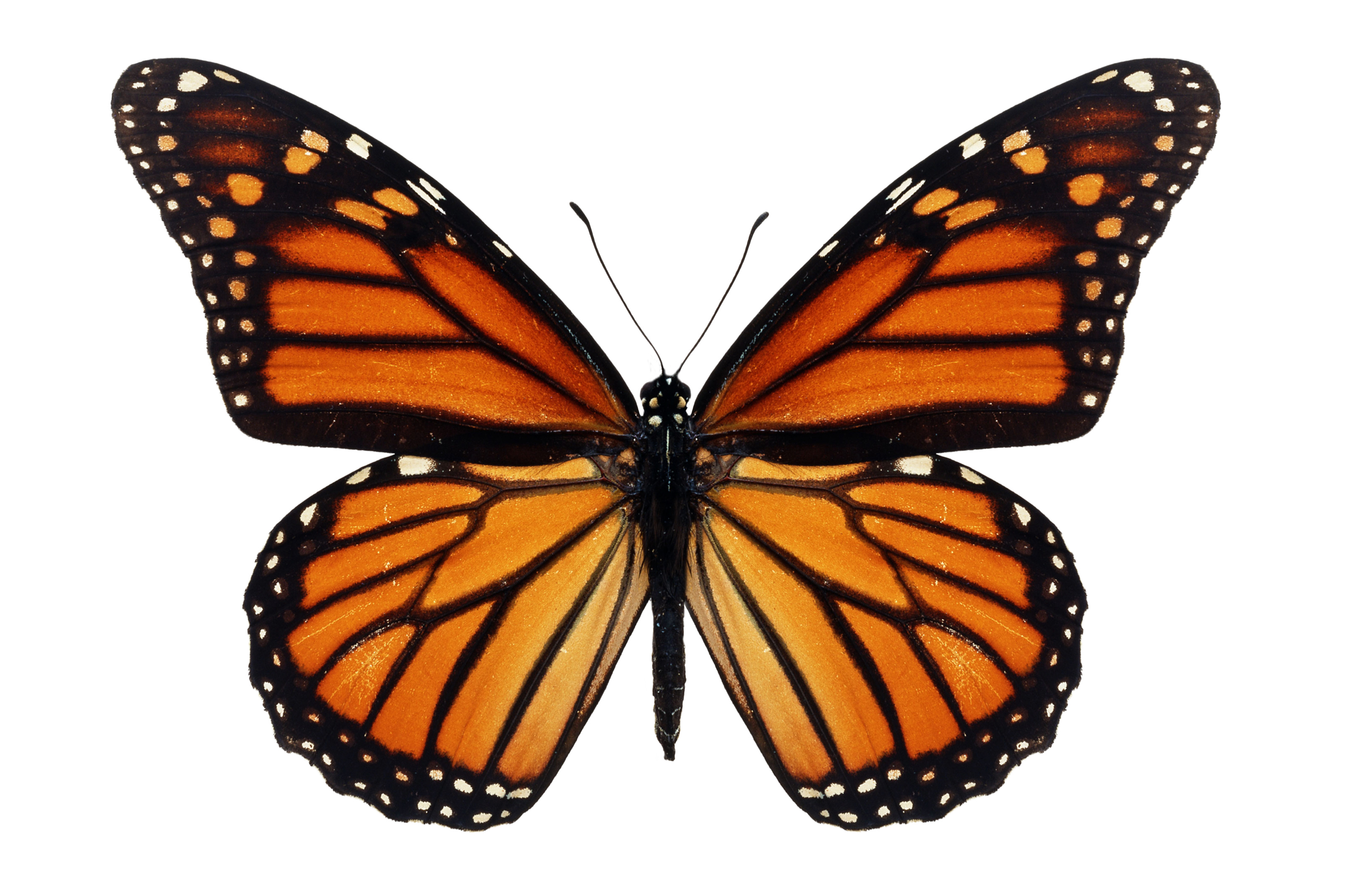
by Admin | Sep 28, 2018 | Wildlife
ANIMAL SCIENCE FRIDAY vol 2 MONARCHS MIGRATION AND FACTS ABOUT THIS ROYAL WINGED INSECT By Steve Fratello The orange and black Monarch is the most famous of the approximately 800 species of butterflies found in the United States. It is familiar to many because of its wide range, large size, bright color and bold pattern, as well as being quite common. The Monarch, with a wingspan of 3 and a half to 4 inches, is one of our largest butterflies. It is only surpassed in size by various species of swallowtail butterflies throughout its N. American range. Though predominantly orange and black, there are numerous white spots contained within the black wing margins. Although overall very similar in appearance, males and females are easy to distinguish: males possess a small black spot in the middle of the hind-wings which is lacking in the females, the black markings along the wing veins are thicker in females. The scientific name of the Monarch is Danaus plexippus. It is one of two Milkweed Butterflies common in the U.S., the other being the Queen, which is a more southern species that is predominantly chocolate brown. The Milkweed Butterflies are mainly a tropical group; their larvae feed on various milkweed species or related plants. The toxins contained in the milkweed plants make the larvae and adults distasteful to predators. The warning colors of both larvae and adults advertise, “Don’t eat me! I taste bad!” The Viceroy, in a somewhat closely related group of butterflies, looks like a smaller version of the Monarch. Long thought to simply be a mimic of the Monarch, the Viceroy...



Recent Comments